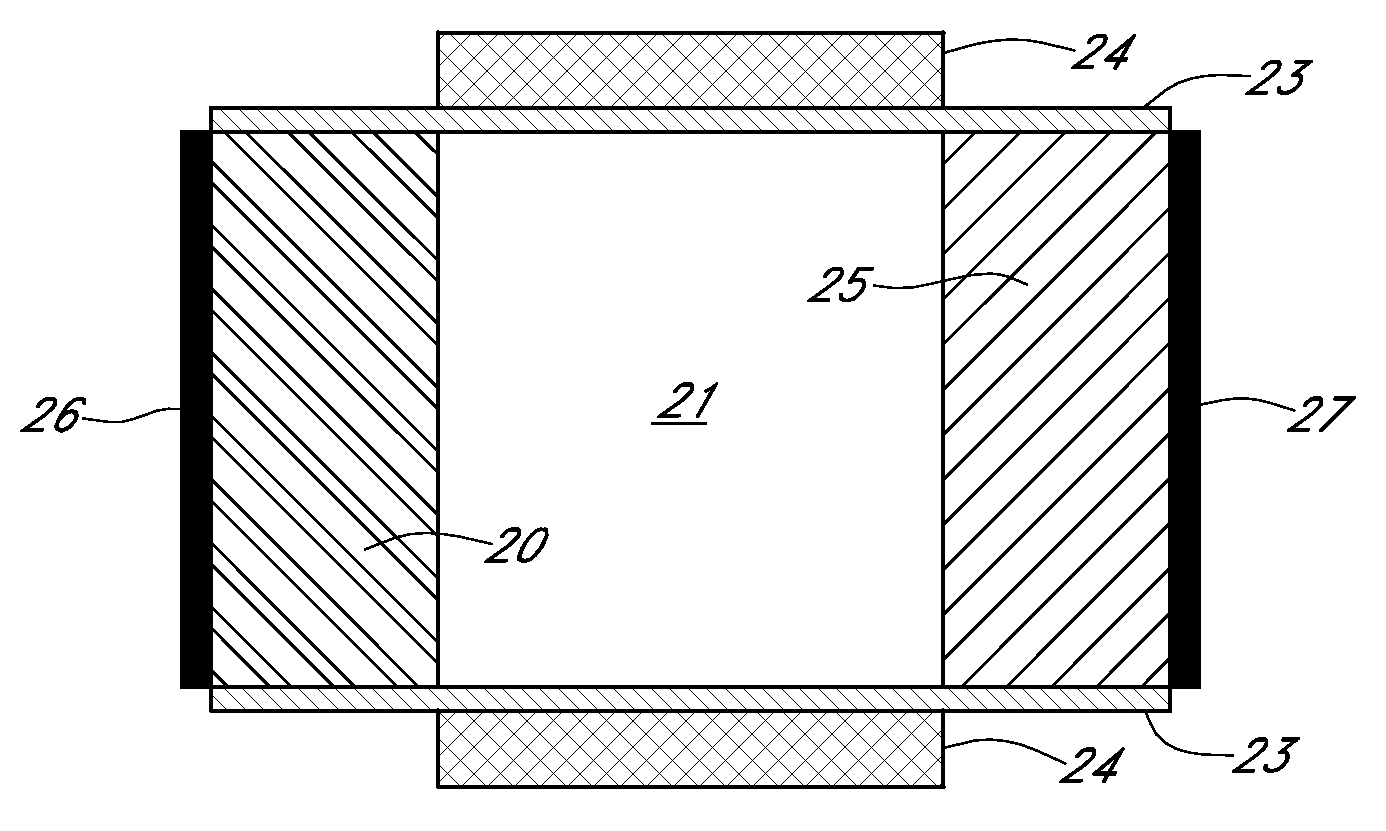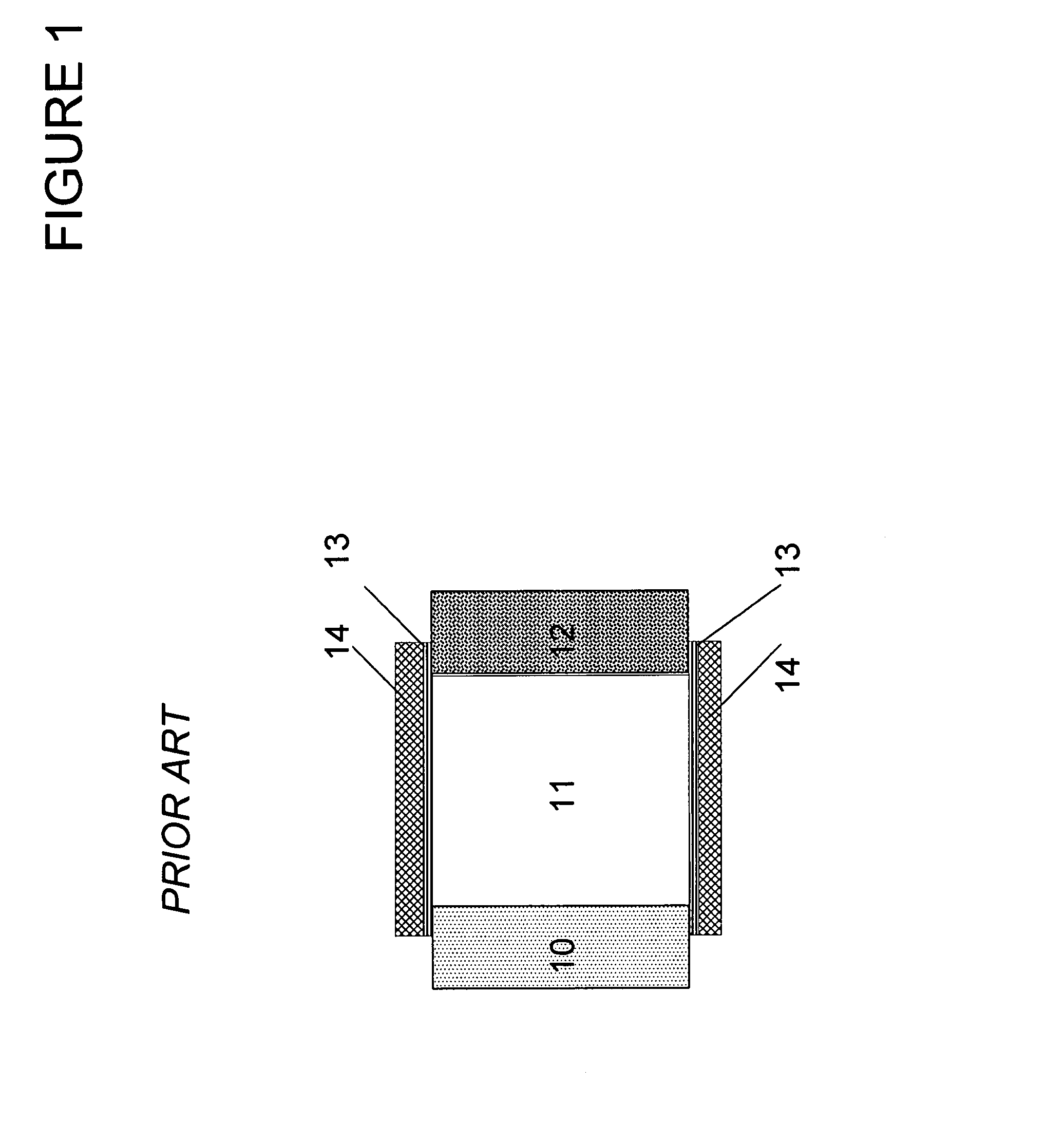Tunnel effect transistors based on elongate monocrystalline nanostructures having a heterostructure
a monocrystalline nanostructure and tunnel effect technology, applied in the field of tunnel field effect transistors, can solve the problems of difficult to reduce the supply voltage, low on-current of tfets, and increase power consumption, and achieve the effect of low power consumption
- Summary
- Abstract
- Description
- Claims
- Application Information
AI Technical Summary
Benefits of technology
Problems solved by technology
Method used
Image
Examples
example 1
Simulations with Device Simulator MEDICI to Illustrate the Effect of Electron Affinity on a (Silicon) N-type NW-TFET with a Highly P-doped Ge Heterosection.
[0109]The simulations are performed with device simulator “MEDICI” to illustrate the effect of electron affinity on a (silicon) n-type NW-TFET with a highly p-doped Ge heterosection. The NW-TFET used for the simulation is shown in FIG. 6A. The NW-TFET structure is 2-dimensional and has a double-gate 24. The height of the central part (between the oxides) is 100 nm, and the height of the hafnium oxide 23 is 4 nm. The width of the highly p-doped heterosection 25 which forms the source region is 30 nm, the width of the channel region 21 is 60 nm, and the width of the highly n-doped drain 22 section is 30 nm. The heterosection 25 is made of either Si0Ge1 or Ge. The definition of Si0Ge1 in MEDICI is: an artificial material with the bandgap of Ge but with the electron affinity of Si. The doping concentrations and dopant type in the NW-...
example 2
Simulations with Device Simulator MEDICI to Illustrate the Effect of Electron Affinity on a (Silicon) P-type NW-TFET with a Highly N-doped Heterosection.
[0112]The simulations are performed with device simulator “MEDICI” to illustrate the effect of electron affinity on a (silicon) p-type NW-TFET with a highly n-doped heterosection. The NW-TFET used for the simulation is shown in FIG. 7A. The NW-TFET structure is 2-dimensional and has a double-gate 24. The height of the central part (between the oxides) is 100 nm, and the height of the hafnium gate 23 oxide is 4 nm. The width of the highly p-doped source region 20 is 30 nm, the width of the channel region 21 is 100 nm, and the width of the highly n-doped heterosection 25 which forms the drain region is 30 nm. The heterosection 25 is made of either Si or of an artificial material X which has all properties of Si except for a larger electron affinity (Eaff,X=4.69 eV, instead of the correct value of Eaff,Si=4.17 eV). The doping concentra...
PUM
 Login to View More
Login to View More Abstract
Description
Claims
Application Information
 Login to View More
Login to View More - R&D
- Intellectual Property
- Life Sciences
- Materials
- Tech Scout
- Unparalleled Data Quality
- Higher Quality Content
- 60% Fewer Hallucinations
Browse by: Latest US Patents, China's latest patents, Technical Efficacy Thesaurus, Application Domain, Technology Topic, Popular Technical Reports.
© 2025 PatSnap. All rights reserved.Legal|Privacy policy|Modern Slavery Act Transparency Statement|Sitemap|About US| Contact US: help@patsnap.com



